Ford Puma vs MINI MINI – Differences & prices compared
Compare performance, boot space, consumption and price in one view.
Find out now: which car is the better choice for you – Ford Puma or MINI MINI?
The Ford Puma (SUV) comes with a Petrol MHEV or Electric engine and Manuel or Automatic transmission. In comparison, the MINI MINI (Hatchback or Convertible) features a Petrol or Electric engine with Automatic transmission.
When it comes to boot capacity, the Ford Puma offers 523 L, while the MINI MINI provides 275 L – depending on how much space you need. If you’re looking for more power, decide whether the 168 HP of the Ford Puma or the 258 HP of the MINI MINI suits your needs better.
In terms of consumption, the values are 13.10 kWh5.40 L per 100 km for the Ford Puma, and 13.80 kWh5.90 L for the MINI MINI.
Price-wise, the Ford Puma starts at 24800 £, while the MINI MINI is available from 23300 £. Compare all the details and find out which model fits your lifestyle best!
Ford Puma
The Ford Puma presents itself as a stylish compact SUV with a distinctive design that combines practicality with a dynamic driving experience. Its sleek lines and sporty aesthetics make it stand out on the road, while the interior offers a comfortable and tech-savvy environment. With an emphasis on efficiency and a smooth drive, the Ford Puma is well-suited for both urban commutes and countryside adventures.
details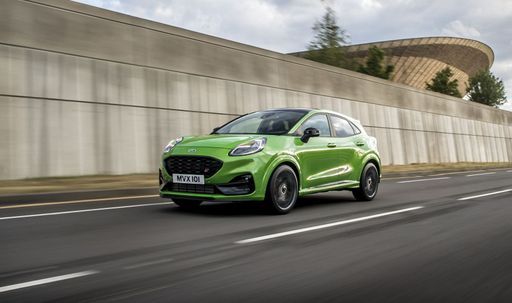 @ puma.fordpresskits.com
@ puma.fordpresskits.com
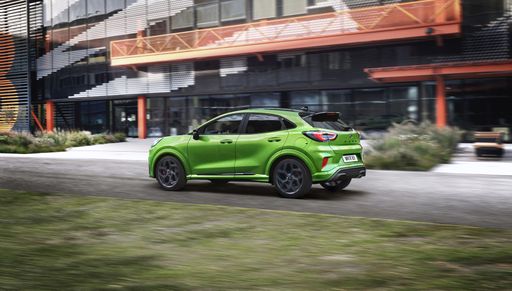 @ puma.fordpresskits.com
@ puma.fordpresskits.com
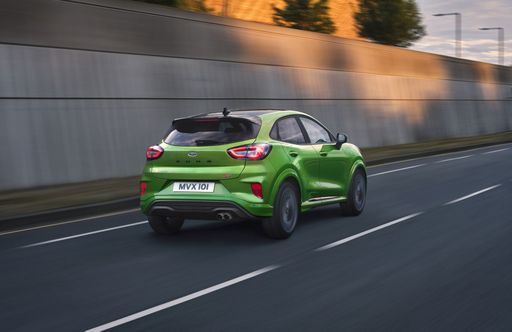 @ puma.fordpresskits.com
@ puma.fordpresskits.com
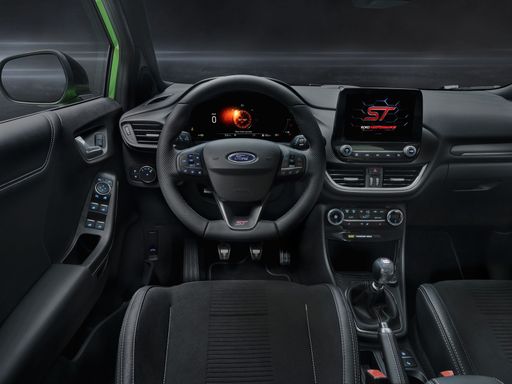 @ puma.fordpresskits.com
@ puma.fordpresskits.com
MINI MINI
The MINI MINI offers an iconic design that seamlessly blends classic charm with modern flair, making it a standout choice in urban environments. Its compact dimensions are deceiving, as the interior is cleverly designed to provide ample comfort and functionality, making daily commutes and weekend getaways equally enjoyable. With responsive handling and a spirited engine, driving the MINI MINI delivers an engaging experience that's perfect for navigating both city streets and winding country roads.
details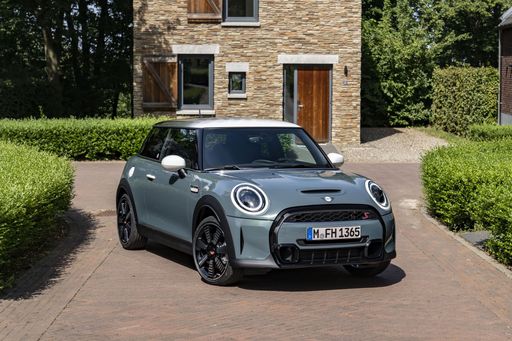 @ press.bmwgroup.com
@ press.bmwgroup.com
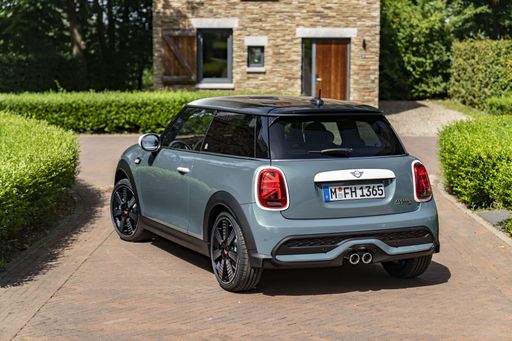 @ press.bmwgroup.com
@ press.bmwgroup.com
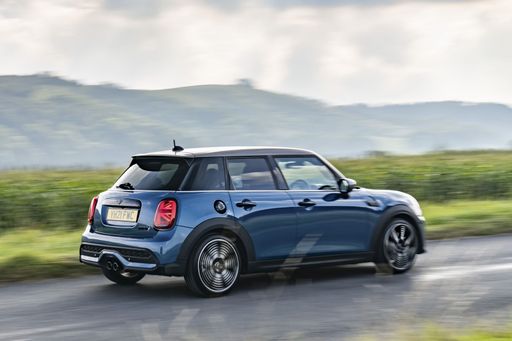 @ press.bmwgroup.com
@ press.bmwgroup.com
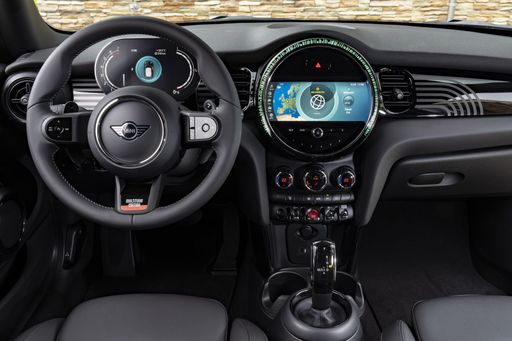 @ press.bmwgroup.com
@ press.bmwgroup.com

|

|
|
|
|
Costs and Consumption |
|
|---|---|
|
Price
24800 - 36300 £
|
Price
23300 - 37500 £
|
|
Consumption L/100km
5.4 - 6 L
|
Consumption L/100km
5.9 - 6.8 L
|
|
Consumption kWh/100km
13.1 - 13.7 kWh
|
Consumption kWh/100km
13.8 - 15.3 kWh
|
|
Electric Range
364 - 376 km
|
Electric Range
298 - 402 km
|
|
Battery Capacity
43 kWh
|
Battery Capacity
36.8 - 49.8 kWh
|
|
co2
0 - 136 g/km
|
co2
0 - 155 g/km
|
|
Fuel tank capacity
42 L
|
Fuel tank capacity
44 L
|
Dimensions and Body |
|
|---|---|
|
Body Type
SUV
|
Body Type
Hatchback, Convertible
|
|
Seats
5
|
Seats
4 - 5
|
|
Doors
5
|
Doors
2 - 5
|
|
Curb weight
1316 - 1563 kg
|
Curb weight
1335 - 1730 kg
|
|
Trunk capacity
456 - 523 L
|
Trunk capacity
210 - 275 L
|
|
Length
4186 - 4226 mm
|
Length
3858 - 4036 mm
|
|
Width
1805 mm
|
Width
1744 - 1756 mm
|
|
Height
1550 - 1555 mm
|
Height
1431 - 1464 mm
|
|
Payload
367 - 469 kg
|
Payload
345 - 445 kg
|
Engine and Performance |
|
|---|---|
|
Engine Type
Petrol MHEV, Electric
|
Engine Type
Petrol, Electric
|
|
Transmission
Manuel, Automatic
|
Transmission
Automatic
|
|
Transmission Detail
Manual Gearbox, Dual-Clutch Automatic, Reduction Gearbox
|
Transmission Detail
Dual-Clutch Automatic
|
|
Drive Type
Front-Wheel Drive
|
Drive Type
Front-Wheel Drive
|
|
Power HP
125 - 168 HP
|
Power HP
156 - 258 HP
|
|
Acceleration 0-100km/h
7.4 - 9.8 s
|
Acceleration 0-100km/h
5.9 - 8.2 s
|
|
Max Speed
160 - 210 km/h
|
Max Speed
160 - 250 km/h
|
|
Torque
170 - 290 Nm
|
Torque
230 - 380 Nm
|
|
Number of Cylinders
3
|
Number of Cylinders
3 - 4
|
|
Power kW
92 - 124 kW
|
Power kW
115 - 190 kW
|
|
Engine capacity
999 cm3
|
Engine capacity
1499 - 1998 cm3
|
General |
|
|---|---|
|
Model Year
2024 - 2025
|
Model Year
2024 - 2025
|
|
CO2 Efficiency Class
D, E, A
|
CO2 Efficiency Class
D, E, A
|
|
Brand
Ford
|
Brand
MINI
|
Ford Puma
A Glimpse into the Ford Puma: Fusing Style with Innovation
The Ford Puma stands as a testament to modern engineering fused with style. This compact SUV is not just about aesthetics but brings to the table an array of technical innovations, topped with the reliability and performance Ford is known for. Let's delve into the technical specifics and innovative features that make the Ford Puma a stellar choice for any car enthusiast.
Powertrains and Performance
The Ford Puma is offered with a range of powertrains designed to deliver optimal performance whilst minimising fuel consumption. At the heart of this compact SUV is the 1.0 EcoBoost Hybrid engine, available in both 125 PS and 155 PS variants. This engine is a marvel of engineering, optimised to deliver power efficiently with a remarkable fuel consumption ranging from 5.4 to 5.7 L/100km for manual versions, and slightly higher for the automated variants.
The top-end 1.5 EcoBoost ST variant takes performance up a notch, providing a robust 200 PS that propels the Puma from 0 to 100 km/h in just 6.7 seconds. This variant is perfect for those who prioritise performance and exhilaration in their driving experience.
Mild-Hybrid Technology
The Puma's mild-hybrid technology plays a significant role in enhancing fuel efficiency and reducing emissions. By utilising a belt-driven integrated starter/generator, the Puma recovers energy usually lost during braking, storing it in a 48-volt lithium-ion battery. This stored energy is then used to assist the engine, providing a boost during acceleration and smoothing out the stop-start technology, ultimately leading to enhanced fuel efficiency.
Design and Comfort
The Ford Puma does not compromise on style and comfort with its ergonomic and stylish design. The SUV is available in multiple trims including the ST-Line, Titanium, and the luxurious Vignale editions, each offering unique aesthetic and technological enhancements. These trim levels provide varied offerings in terms of both exterior styling and interior comfort, ensuring there's a Puma that meets every personal preference.
Inside, the Puma offers a driver-focused cockpit with advanced technological integrations such as the SYNC 3 infotainment system, providing seamless connectivity and intuitive control of the vehicle's numerous technological features.
Safety and Technology
Safety remains paramount, and the Ford Puma is equipped with the latest security and technology features. It boasts the Ford Co-Pilot360 suite which includes adaptive cruise control, pre-collision assist with autonomous emergency braking, and lane-keeping assist, enabling a safer driving experience on both city roads and highways.
Versatility and Practicality
Beyond performance and safety, the Ford Puma shines in its versatility. With a boot capacity of 456 litres, it offers ample space for all sorts of adventures, whether you're heading on a family trip or loading sports equipment. Its innovative MegaBox is an extra storage solution, providing additional space below the boot floor.
The Puma's agile handling, paired with its compact dimensions—spanning a length of 4186 to 4266 mm and a width of 1805 mm—makes it an ideal choice for urban commuting and beyond.
Conclusion
In conclusion, the Ford Puma beautifully blends practical features with cutting-edge technology, offering a package that appeals to both the tech-savvy driver and those seeking comfort and reliability. Its range of innovative features, powerful yet efficient engine options, and a design that is both functional and stylish make it a frontrunner in the compact SUV market.
Whether you're drawn by the efficient mild-hybrid engines or the robust performance of the ST variant, the Ford Puma represents a modern driving experience where innovation meets everyday usability.
MINI MINI
Introducing the New MINI MINI: A Fusion of Tradition and Innovation
The iconic MINI has always stood out on the roads, known for its unique style and compact size. The latest model series, the MINI MINI, continues to uphold the brand’s reputation while embedding a host of modern innovations that cater to the diverse needs of today’s drivers.
Power and Performance: Under the Bonnet
The MINI MINI offers a range of engine options that cater to different driving preferences. There's the choice of a traditional petrol engine or a more future-oriented electric motor. Petrol variants offer between 156 and 204 PS, providing a satisfying blend of power and efficiency with fuel consumption ranging from 5.9 to 6.4 L/100km. On the other hand, the electric variants come with power ratings of up to 218 PS and offer a driving range between 298 and 402 km on a single charge, with energy consumption measured at 13.8 to 14.4 kWh/100km.
Transmission and Drivetrain: Seamless and Efficient
All MINI MINI models are equipped with automatic transmission systems to ensure smooth and hassle-free drives. The petrol engines feature an automatic dual-clutch transmission (DKG), while the electric variants are paired with a reduction gearbox. Both systems work in harmony with the front-wheel-drive layout, ensuring responsive handling and a dynamic driving experience.
Design and Dimensions: Compact Yet Spacious
The MINI MINI retains its compact dimensions with a length between 3858 and 4036 mm, making it ideal for city environments. Despite its compact size, it offers enough room to comfortably accommodate up to five passengers, with a boot capacity ranging from 210 to 275 litres. The interior is designed to maximise space without compromising on style or comfort, featuring high-quality materials and innovative layouts.
Safety and Efficiency: Future-Ready Technologies
The new MINI MINI is not just about aesthetics and power; it also prioritises safety and environmental efficiency. It complies with the highest safety standards, featuring advanced driver assistance systems. In terms of emissions, the petrol variants have CO2 efficiency classes in the range of D to E, while the electric variants boast an A-class rating, highlighting MINI's commitment to reducing its carbon footprint.
Pricing and Running Costs: Value for Money
With prices ranging from €28,900 to €45,860, the MINI MINI caters to a wide market segment, offering options that suit different budgets. Running costs are competitive, with monthly costs calculated between €868 and €1163 and per kilometre costs ranging from 34.7 to 46.5 cents. This makes the MINI MINI an economical choice, not just in terms of purchase price but also in everyday usage.
The MINI MINI is more than just a car; it's a statement of individuality and a testament to MINI's legacy of innovation and style. With its modern features, efficient performance, and timeless design, it continues to attract those who dare to stand out on the road. Whether you gravitate towards traditional petrol engines or embrace the electrified future, the MINI MINI offers something for every driver.
The prices and data displayed are estimates based on German list prices and may vary by country. This information is not legally binding.
